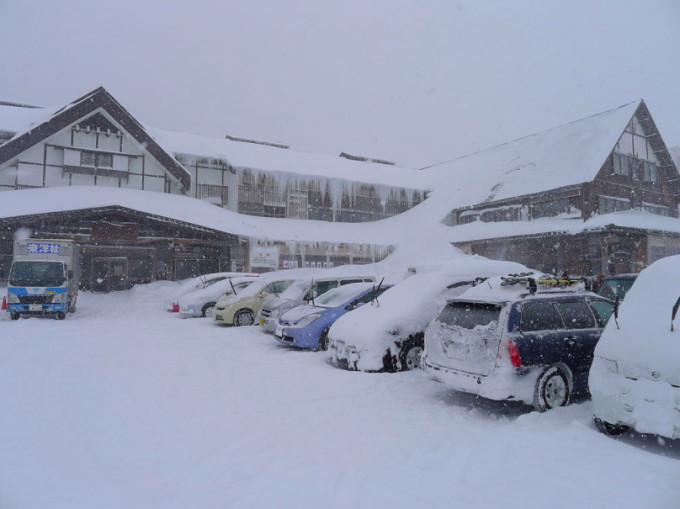
© Nogiuchi via Wikimedia CommonsThe outside of Sukayu Onsen in late December 2012.
Japan is home to the snowiest inhabited place on Earth and has many world-renowned ski resorts.
A record breaking low pressure system, now centred over the Aleutian Archipelago in Western Alaska, is transporting the coldest airmass on the planet from Siberia and over the Pacific Ocean. This system triggered record low temperatures in many locations across northern Japan during the last week of 2020, with Horokanai bottoming out at a bone-chilling -32.6°C and many nearby regions seeing temperatures around -30°C.This system also brought enormous amounts of snow to Japan that has many winter sport fans around the world impressed.
Canada is no stranger to heavy snow, usually coming in the form of lake-effect, sea-effect or alpine snow. Japan, however, can put Canada to shame in this category. When all the ingredients come together, Japan can produce some of the highest snowfall rates on Earth.
In fact, Sukayu Onsen, located in the city of Aomori, is the snowiest inhabited place on Earth and has an average yearly snowfall of 17.6 m.
This part of the world sees such significant amounts of snowfall because Siberian air rushes over the Sea of Japan and abruptly runs into the Japanese Alps, which contain 22 peaks over 3,000 m. The combination of the mountainous geography and atmospheric conditions recently resulted in
over 200 cm of snow accumulating in Minakami during a 72 hour period, with seasonal totals surpassing 3,000 cm.Although 2021 isn't expected to start off by breaking those records, parts of northern and central Japan could receive 300-400 cm of snow through the first week of 2021.
Many ski resorts in Japan are considered to be some of the best destinations on the planet because of the snow's quality and staggering accumulations. For example, Hakuba hosted the 1998 Nagano Winter Olympics and has an
annual snowfall rate of 10-11 m. Due to the alpine location, Habuka's snow season ranges from November to May since temperatures range from -7°C to -2°C near sea level and -7°C to -14°C at the highest elevations.
The system that was responsible for the heavy snow and bitter cold in Japan will deteriorate over the coming days, but a new low pressure system will form in the Sea of Japan midweek and will look to replace the current low as the king of the Bering Sea.
Coupled with the usual strong ridge over Western Siberia, this active pattern shows no sign of stopping through mid-January.

Comment: View videos here: Heavy snow continues in mountainous areas of Japan - up to 2 meters